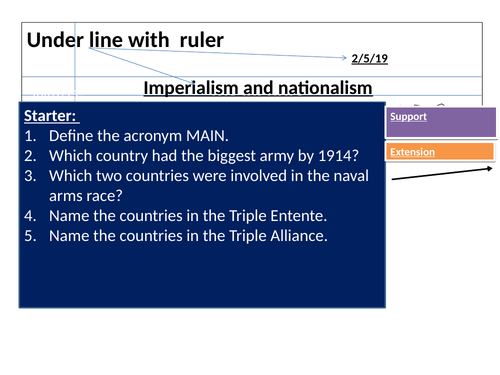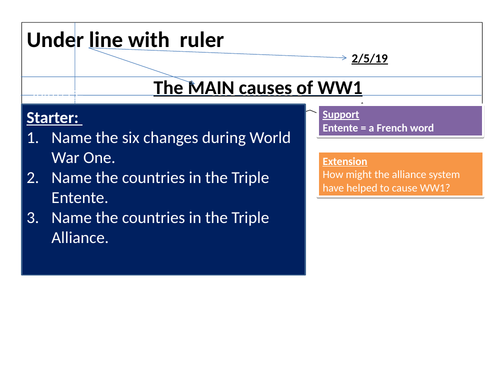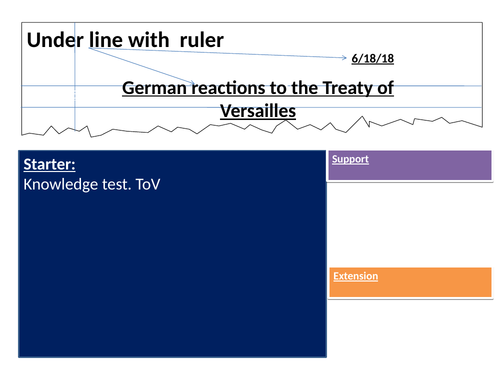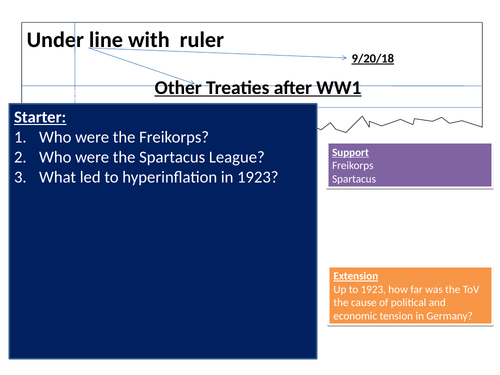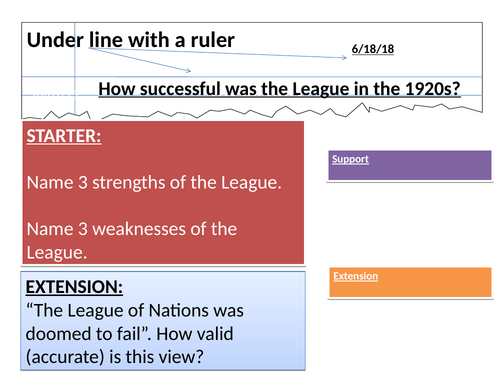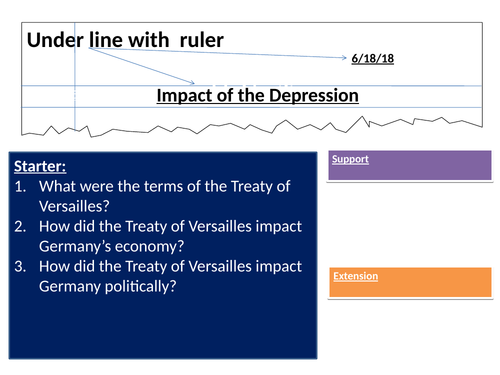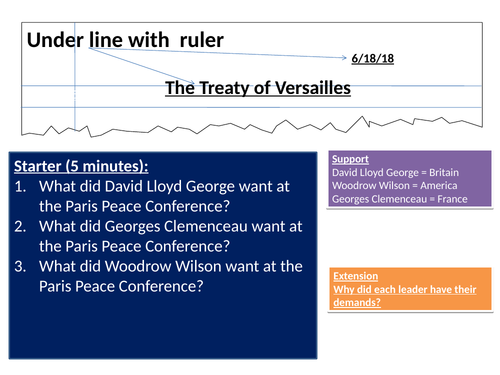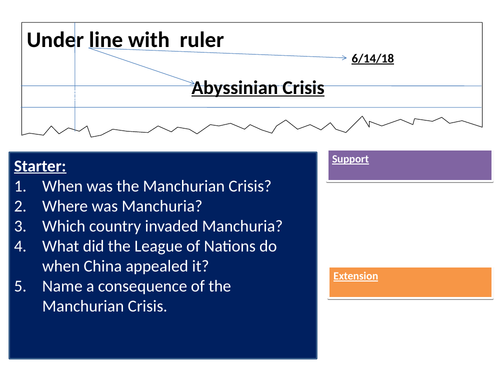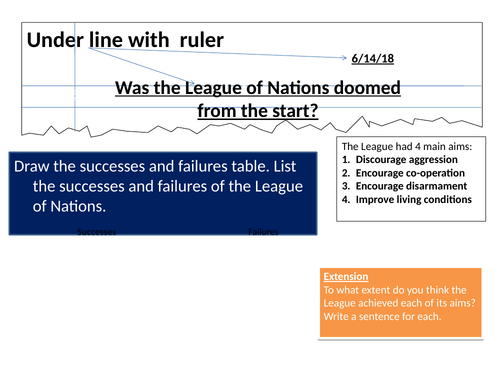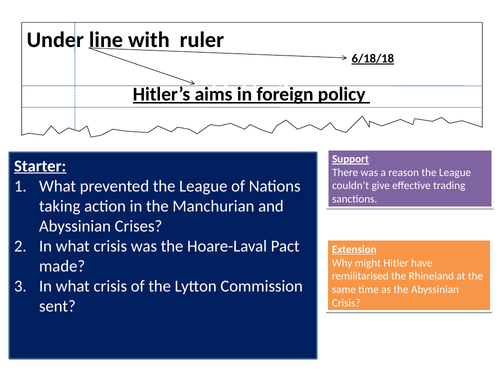62Uploads
10k+Views
14k+Downloads
History

British Empire (unit of work)
This scheme of work focuses on how imperialism has developed over time with a focus on the development of India and scramble for Africa.
These lessons are easily adaptable and followed with clear instructions and a scheme of work
This unit of work includes:
10 lessons, plus assessment
A written SoW. Learning objectives are linked to suggested learning activities.
Where there is reading, there is a choice of reading ages to use.
There are 10 lessons int he unit of work, plus one assessment:
What was the British Empire?
Motives for imperialism
East India Company
Cause of EIC taking over India
Indian rebellion
Impact of empire on Britain
Berlin conference
Scramble for Africa
Contemporary interpretation of Empire
Preassessment lesson
Assessment
Where there is reading to complete there is a choice of reading age of 14 or 11. The reading age has been determined using the Flesch-Kincaid readability test* and all reading comes with five comprehension questions that can be self-assessed.
There are opportunities for pupils to peer assess and self assess using the success criteria provided.
Flesch-Kincaid readability test* has been used to determine the reading age of each piece of text
The Flesch-Kincaid reading method is a readability test designed to assess the complexity of written text. It was developed by Rudolf Flesch and J. Peter Kincaid in 1975 and has since become one of the most widely used methods to determine the readability of texts in English. The Flesch-Kincaid reading method calculates the reading ease and grade level of a piece of writing based on two primary factors: average sentence length and average number of syllables per word

Industrial Revolution SoW, KS3 (change and continuity)
This is seven lesson scheme of work, plus an assessment that focuses on the change and continuities of the Industrial Revolution. There is an additional lesson called What was the Industrial Revolution that is listed on TES that accompanies this SoW.
Each lesson contributes towards answering the question of how far was the Industrial Revolution a turning point?
There is an additional lesson that can be found here https://www.tes.com/teaching-resource/resource-12888894 for FREE.
Steam engine (peer assessment at end).
Factory life
Agricultural revolution (group work lesson)
Urbanization
Transport (peer assessment)
Resistance to change
Pre-assessment lesson
Assessment
• There is a knowledge organiser included that is editable.
• Each lesson starts off with recall questions from the knowledge organiser. This is self assessed.
• Each lesson has three learning objectives.
• Lessons 5 and 1 have opportunities for peer assessment. The peer assessment slide has examples of WWW and EBI.
• Each lesson has an opportunity for peer assessment.
• All lessons, excluding agricultural revolution lesson, have a choice of reading age 12 or 10.
This has designed to be a plug and play style of lessons. No additional planning is needed, but all resources are editable.

English Civil War (unit of work)
This is a source-based SoW that focuses on the causes and course of the English Civil War. The SoW is broken into ten lessons:
Gunpowder Plot
Primary source 1
Charles I and Parliament
Primary source 2
Start of the English Civil War
Causes of the English Civil War
Events of the English Civil War
Execution of Charles I
Primary source 3
Assessment (source based assessment.
Where there is reading to complete (lessons 1, 3, 5, 7, 8) there is a choice of reading age of 12 or 10. The reading age has been determined using the Flesch-Kincaid readability test* and all reading comes with five comprehension questions that can be self-assessed.
There are opportunities for pupils to peer assess their own PEE paragraphs using the success criteria provided.
This unit of work includes:
• Ten lessons. Five of these lessons have a comprehension-based reading activity targeted at reading age 12 or ten, depending upon the ability of the group.
• All lessons have blooms related to learning objectives.
• A SoW that links learning activities to the learning objectives. There is also an intention statement.
• A knowledge organiser that is editable.
• While the assessment lesson is a source based it can easily be edited into causation.
The Flesch-Kincaid reading method is a readability test designed to assess the complexity of written text. It was developed by Rudolf Flesch and J. Peter Kincaid in 1975 and has since become one of the most widely used methods to determine the readability of texts in English.The Flesch-Kincaid reading method calculates the reading ease and grade level of a piece of writing based on two primary factors: average sentence length and average number of syllables per word

How did Henry VIII gain wealth and power from the Reformation?
This lesson covers three learnign objectives:
I will b able to recall key information about Henry VIII’s break with Rome.
I should be able to describe how Henry VIII received wealth and power from his break with Rome.
I might also be able to explain how far wealth and power were causes of Henry VIII’s break with Rome.
Activity includes differentiated reading (reading ages 13, 10, and 8).
Self assessment activities included.
Final activity includes answer to the PEE paragraph: how far was wealth and power to blame for the break from Rome? The next slide includes peer assessment activities.

iGCSE Edexcel medicine revision sheets
iGCSE Edexcel medicine revision sheets:
Changes in medical treatment and in understanding the cause of illness
Improvements in public health provision
Changes in surgery
The changing role of women in medicine
The impact of war and science and technology on medicine
This should be a simple plug-and-play lesson.
Each sheet has prompts to allow independent revision.
Each sheet is accompanied by an answer sheet.You could use this to enhance your knowledge or you may want to use it as a peer/self assessment tool.
There is a powerpoint with clear instructions and self assessment included.
There are clear learning objectives displayed at the bottom of each slide.
Students will need the textbook in order to guide their revision. By the end of the activity, students should have an A3 sheet for each key theme from the spec.

iGCSE Edexcel revision lesson 3) Germany: development of dictatorship
Revision lesson for the iGCSE History paper 1 topic 3: Germany: development of dictatorship.
This lesson includes:
Power point with instructions, page numbers from the Published textbook (details below), self assessment.
You may need to zoom in and out of the powerpoint for the self assessment OR simply print off the answer sheet I have included.
There is an A3 sheet with the entire unit it. Again, you want want to print this as septerate pages.
Also included is a learning checklist. This is a list of what the spec says needs to be taught. Students then RAG rate it. There is a list of where to find exam questions for each section too.
This should be a plug and play lesson. It has been designed for an hour’s lesson but may take more depending on the ability of your children.
Textbook you need: Edexcel International GCSE (9-1) History Development of Dictatorship: Germany 1918-45 Student Book *ISBN: 978-0435185381
*

Cause American Revolution (unit of work)
Causes of the American Revolution
These lessons have been designed to be plug and play. You could open the PowerPoint and begin teaching without any additional work.
#What’s Included?#
Seven lessons
Building an empire
Why go to America
American Revolution (including Boston Tea Party, Declaration of Independence, taxation without representation)
War of independence
Causes of the American Revolution
Causation lesson
Assessment
Knowledge organiser
The knowledge organiser is targeted at transferring key knowledge from short to long term memory.
Scheme of work
A written scheme of work that includes learning objectives along with suggested activities aligned to the learning objective.
A intention statement sets out the knowledge to be gained and also the importance of the second order concept of significance.
This topic is vital at KS3 for studying the American Civil War and later American units (like Civil War) at KS4.

Cause and course of WW1 Edexcel iGCSE revision lesson
This will take more than one lesson and could be used as a home work activity for content revision.
There are answer sheets in the same format as the worksheets. As this is a revision activity, the answers do not go into all of the details of the textbook.
This should be an easy plug and play lesson.

First and second Moroccan Crisis
GCSE Modern World History (Walsh, 2001) has been used for the lesson.

Political impact of the Treaty of Versailles.
Political impact of ToV.
No textbook required.
Used for IGCSE History.

German reactions to the Treaty of Verailles
AQA textbook required. Many other textbooks will include the same content.

Other Treaties after WW1
Used for IGCSE.
Treaty of Sévres
Treaty of Trianon
Treaty of Neuilly
Treaty of St Germain

Abyssinian Crisis
Two lessons on the Abyssininan Crisis.
A few resources taken from JohnDClare.
Used for IGCSE.

Was LoN doomed from start
Was the League of Nations (LoN) doomed from the start?
no textbook required.

Hitler's aims in foreign policy
Hitler’s aims in foreign policy.
Use for IGCSE.
No textbook required.









